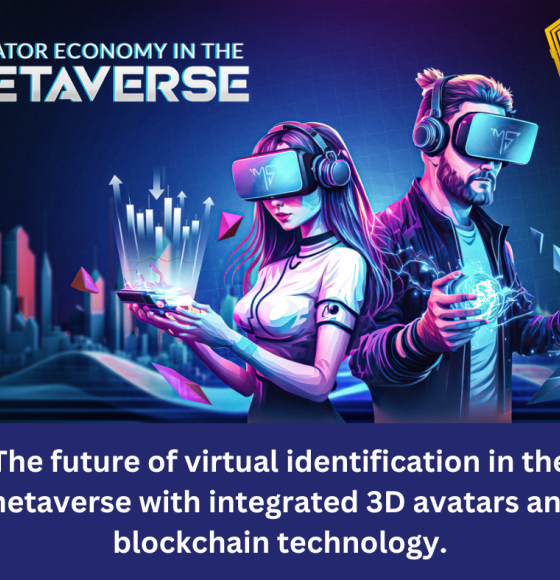The word “metaverse” refers to a highly immersive 3D virtual world experience made possible by a combination of artificial intelligence (AI), augmented reality (AR), virtual reality (VR), and mixed reality (MR) technologies. Leading businesses in a variety of industries, including retail, banking, automotive, fashion, and home and leisure, now have the chance to profit from new revenue sources.
The Metaverse’s Ascent:
Although the idea of the metaverse is not new, recent technological developments have made it more plausible. Users can immerse themselves in a range of experiences, from gaming to virtual work environments and social interactions, in this large, interconnected digital universe. As the metaverse expands, the necessity of a robust and flexible virtual reality becomes paramount.
The Function of 3D Avatars:
The gaming industry has long relied on 3D avatars because they let gamers personalize their in-game characters. Their promise goes far beyond games, though. In the metaverse, users are represented digitally by 3D avatars. These incredibly realistic 3D avatars can also be utilized as virtual assistants, simulating a brand’s salesman in today’s business-customer interactions. They serve as a link between the real and virtual worlds, enabling people to interact on digital platforms while feeling present and authentic.
The ecosystem of the metaverse is beginning to include the avatar economy as a key element. Users can trade, buy, and sell 3D avatars, outfits, and other items, fostering a bustling market. The size and growth of the avatar market, according to recent data, are as follows:
- The global market for digital avatars, which was valued at USD 14.34 billion in 2022, is anticipated to expand at a CAGR of 47.1% from 2023 to 2030.
- Digital human avatar sales are expected to reach USD 527.58 billion globally in 2030, expanding at a revenue CAGR of 46.4% during that period.
Applications and Adoption:
Blockchain technology and 3D avatar integration are already taking off in a number of sectors, including:
Gaming: Blockchain is being used by gaming firms like Unity and Ubisoft to secure in-game assets and enable cross-game exchange of avatars and commodities.
Virtual Real Estate: Real estate that users can own virtually exists in the metaverse. Transparent ownership records are guaranteed by blockchain technology.
Education and Employment: With blockchain protecting identities and credentials, virtual classrooms and offices are using 3D avatars to create lifelike interactions.
Social media and entertainment: The way people communicate and interact online is changing as a result of 3D avatars and blockchain technology. Users can build and design their own avatars, explore virtual worlds, and interact with others on platforms like Decentraland, CryptoVoxels, and Somnium Space.
Wellness and Health: Healthcare services are becoming more accessible and of higher quality because to 3D avatars and blockchain technology. With blockchain providing data privacy and security, patients can communicate with doctors, therapists, and coaches remotely via 3D avatars. Patients may now access their medical information, share them with authorized parties, and monetise their health data thanks to blockchain technology.
Art and style: Blockchain technology and 3D avatars are opening up new avenues for artistic expression. Digital works of art, animations, and performances can be produced by artists using 3D avatars and sold as non-fungible tokens (NFTs) on blockchain platforms. Fashion designers can work with other designers, provide customers customized clothing alternatives, and present their collections using 3D avatars.
Benefits of 3D avatar integration with blockchain:
Blockchain technology can help 3D avatars in the metaverse become more decentralized, autonomous, and interoperable. The following are some advantages of using blockchain technology with 3D avatars:
Ownership: Because they can save their data and avatars on the blockchain, users may fully own and control both. Using NFTs, which can vouch for their originality and distinctiveness, users can also demonstrate the origins and legitimacy of their avatars.
Interoperability: Due to the blockchain’s support for common standards and protocols, users can utilize their avatars on many metaverse platforms and applications. Users’ avatars and attributes can be moved across environments without losing their identification or worth.
Customisation:Users can alter their avatars to suit their interests and requirements by selecting from a wide range of features and settings that are offered on the blockchain. Using 3D modeling software, users can even develop their own avatars and mint them as NFTs on the blockchain.
Monetization: Users can earn money from their avatars by engaging in different metaverse activities and events, selling or renting them to other users, or both. Incentives or awards can be earned by users for using their avatars or for advancing the metaverse.
Conclusion:
The way we connect and socialize online is changing because to the incorporation of 3D avatars into the metaverse and digital platforms. The distinction between the real world and the virtual world is muddled by these lifelike representations of users, enabling a more personalized and engaging experience. 3D avatars are encouraging a new era of connection in the digital world through improving engagement and self-expression.

















